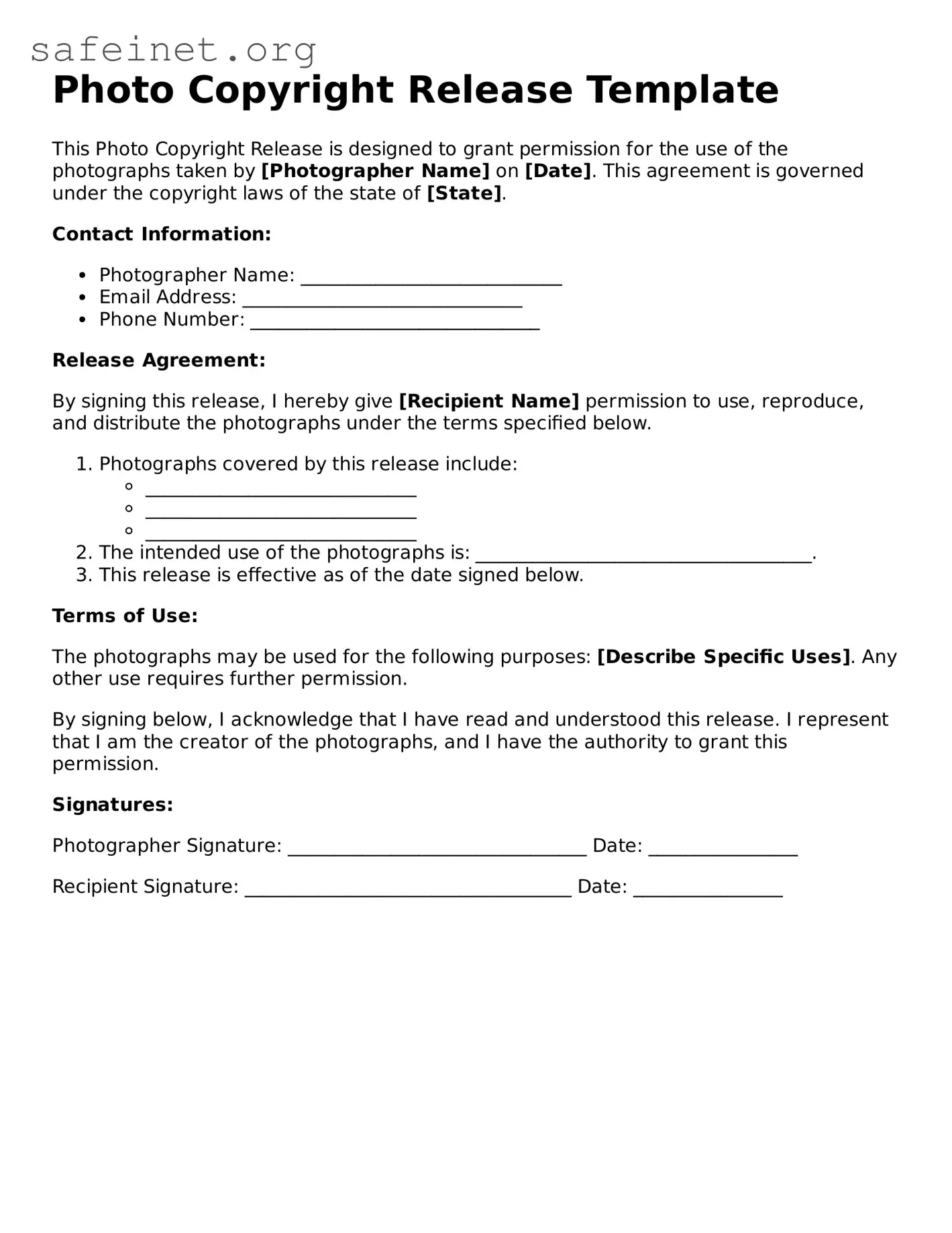What is a Photo Copyright Release form?
A Photo Copyright Release form is a legal document that allows the photographer or the individual taking the photos to transfer copyright ownership or permission to use those photos to another party. This typically involves granting rights for reproduction, distribution, or promotional use of the images. It clarifies who can use the photos and for what purposes, ensuring that both parties have a clear understanding of their rights and obligations.
Why is a Photo Copyright Release form important?
This form is essential because it protects the rights of both the photographer and the person or organization receiving the images. It helps prevent potential disputes over the use of the photos. By having a signed release, the photographer confirms that they are transferring specific rights, while the recipient knows they have the authority to use the images without infringing on copyright laws.
When should I use a Photo Copyright Release form?
Whenever photographs are taken for commercial purposes or when there is a possibility of public distribution, a Photo Copyright Release form should be used. This includes photos taken for advertising, marketing campaigns, or any situation where the images may be sold or shared widely. Using the form can help avoid conflicts about how the photos can be used later on.
Who should sign the Photo Copyright Release form?
The form should be signed by the photographer or the person who owns the copyright to the images and the individual or organization that will be using the photos. If the photographer is an employee, the employer might need to sign, especially if the photos were taken as part of their professional duties.
Can I customize a Photo Copyright Release form?
Yes, you can customize a Photo Copyright Release form to fit your specific needs. While many forms are standard, adjusting the language to clarify the terms of use, duration, and geographical limits can provide better protection for both parties involved. Always make sure that any modifications still comply with copyright laws.
What happens if I do not use a Photo Copyright Release form?
Without a release form, you may face legal issues regarding copyright infringement if the images are used commercially or distributed without permission. The photographer retains the right to enforce their copyright, which means they could take action against unauthorized use. Using a release helps safeguard both parties from such complications.
Is there a fee associated with the Photo Copyright Release form?
The cost of a Photo Copyright Release form typically depends on how you obtain it. If you use a template or an online service, there might be a small fee. However, many photographers create their own forms, which can be done without incurring any cost. Regardless, investing time in creating a strong release form is crucial for legal protection.
